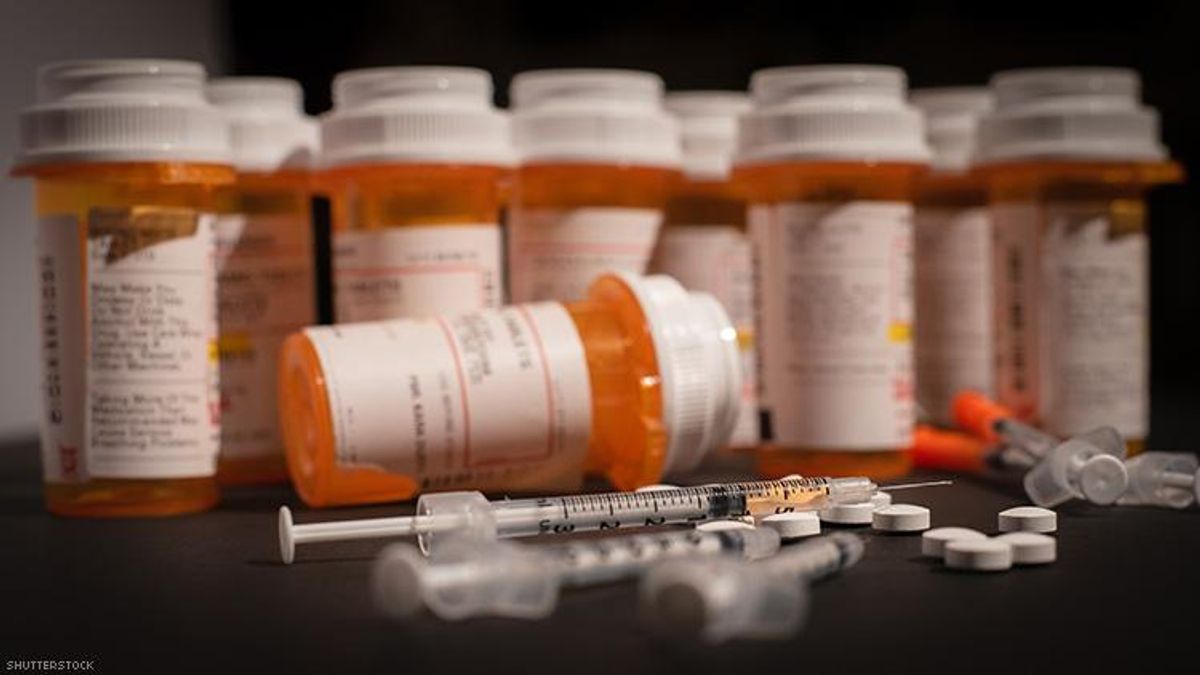Treatment
HIV Outbreak Is Tied To An Opioid Epidemic In West Virginia

Despite a robust healthcare system, Cabell County saw one of the highest HIV outbreaks since Indiana in 2015. So what's the deal?
September 03 2019 3:32 PM EST
By continuing to use our site, you agree to our Privacy Policy and Terms of Use.

Despite a robust healthcare system, Cabell County saw one of the highest HIV outbreaks since Indiana in 2015. So what's the deal?
A recent surge of HIV cases in Cabell County, W.V., is now linked to the rise of opioid use.
Since January 2018, Cabell County has reported 74 new HIV diagnoses, according to Politico, mainly among drug users sharing needles. The county itself has a well-working healthcare system with resources not unlike the Trump administration is proposing in its plan to end the HIV epidemic by 2030, so the fact that new diagnoses have increased despite such resources is worrisome for health care professionals.
“We’re recognizing every day just how big a challenge this is,” John Wiesman, co-chair the Presidential Advisory Council on HIV/AIDS, told Politico. “There are a lot of things making this a really difficult task, and one of those is the opioid epidemic. We’ve got all of these overlapping issues coming together, a lot of which are social factors, which is why it is so important to have both a medical approach and a larger health and human services approach to this epidemic.”
The Cabell County outbreak is likely the largest HIV outbreak to have occurred since Indiana’s Scott County four years ago, which saw over 200 people contract the virus. During its height, nearly 20 people were contracting HIV each week. Vice President Mike Pence was the governor of Indiana at the time, and was nationally criticized for procrastinating efforts to combat the rising numbers. Eventually he passed a needle exchange program, which resulted in a steep decline of diagnoses almost immediately.
It was around the time of Indiana’s outbreak that Cabell County funded its own needle exchange program, as reported by the state’s Department of Health and Human Resources. The county also took serious measures toward HIV prevention, including expanding access to testing, drug treatment programs, and prevention tools like PrEP.
But one of the invisible reasons for the outbreak could be more nuanced.
As Politico points out, many towns in West Virginia have been “hollowed out” by the loss of coal mining jobs. A lot of rural areas lack resources that address social factors like homelessness and injection drug use. These populations, by far, are the ones most at-risk when outbreaks like this occur.
Trump’s plan is particularly focused only on 48 counties that are most vulnerable to HIV outbreaks. Cabell County was not on that list, nor was any other county in West Virginia. However, in 2016, the Centers for Disease Control and Prevention identified 220 counties at high risk because of the prevalence of injection drug use. Nearly half of West Virginia’s 55 counties, including Cabell, were on that list.
Still, the outbreak could have been a lot worse.
Thanks to the state’s robust health department, and aid from Marshal University (located in the nearby city of Huntington), the city was able to contain the numbers as best it can. In fact, according to Michael Kilkenny, physician director at Cabell’s health department, nearly half of the county’s at-risk population has been tested for HIV through a large outreach effort.
“I have no answer for that,” Kilkenny told Politico when asked to explain the outbreak given the county’s prevention efforts. “At night, it’s what you ask when you are screaming at the sky.”
As for the rest of West Virginia, some counties — like Logan County, 70 miles away from Cabell — aren't keen to adopting more robus health regulations. Logan passed a resolution last month opposing the creation of any needle exchange programs and prohibiting the use of county funds to create one.
Meanwhile, Idano and Georgia, a state with the highest rate of new HIV diagnoses in the country, both authorized needle exchanges this year.